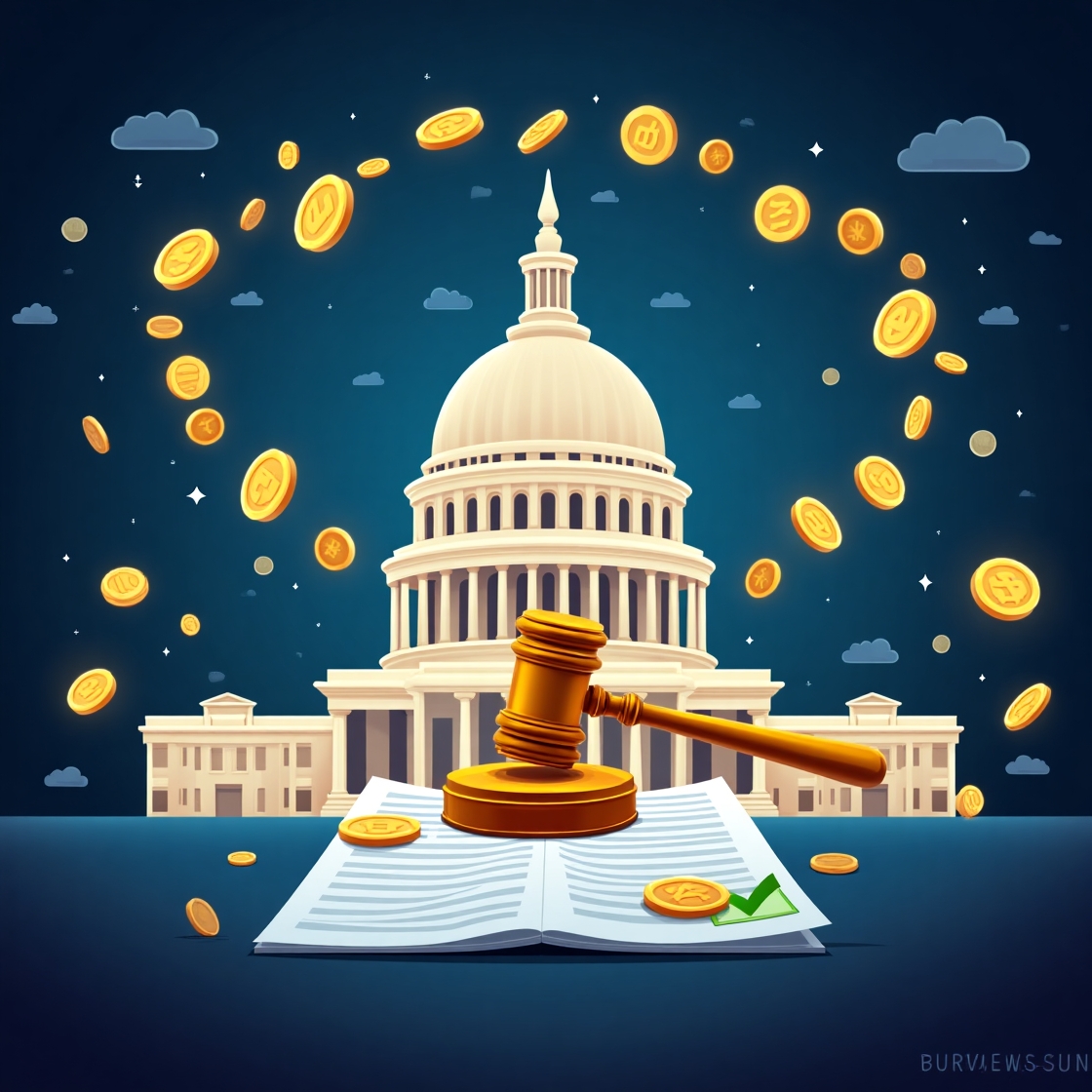In a landmark development for the digital asset industry, the United States has officially passed its first federal law regulating stablecoins—a crucial turning point that could shape the future of cryptocurrency regulation in the world’s largest economy. With the “Clarity for Payment Stablecoins Act” making its way through the House of Representatives, the U.S. has signaled a clear intention to create a structured, legal framework for the issuance and oversight of stablecoins.
A New Chapter in U.S. Crypto Legislation
The law represents a significant milestone for the crypto sector, which has long struggled with unclear or inconsistent regulatory guidance. Introduced by House Financial Services Committee Chair Patrick McHenry, the bill received bipartisan support and is widely seen as a foundational step in broader digital asset legislation.
Stablecoins, digital currencies pegged to the value of traditional fiat currencies like the U.S. dollar, play a critical role in the crypto ecosystem. They offer the stability of fiat with the efficiency and speed of blockchain technology. Yet until now, their legal status in the U.S. remained largely undefined—leading to a lack of investor confidence, uncertainty for developers, and hesitancy from institutions.
Key Features of the Stablecoin Law
The new law outlines several essential regulatory mechanisms:
-
Federal Oversight of Issuers: The bill grants the Federal Reserve authority to regulate stablecoin issuers, ensuring they meet certain standards of transparency, liquidity, and reserve backing.
-
State-Level Licensing: States can also license and supervise issuers, maintaining a dual framework that respects both state and federal roles in financial regulation.
-
Prohibition on Algorithmic Stablecoins (For Now): The law bans algorithmic stablecoins that aren’t fully backed by fiat reserves for a limited period. This aims to protect users from the high volatility and collapse risks previously seen with projects like TerraUSD (UST).
-
Clear Reserve Requirements: All stablecoins must be fully backed by high-quality, liquid assets. Issuers must provide monthly disclosures of their reserves to ensure transparency and protect consumers.
-
Consumer Protections: In addition to reserve audits, the bill mandates that stablecoin issuers maintain clear redemption rights for holders, reducing the risk of loss during market shocks.
What Happens Next?
Although the bill has passed the House, it still requires Senate approval and the President’s signature to become law. The fact that it received strong bipartisan support in the House increases the likelihood of eventual adoption, especially as stablecoins gain more use in both retail payments and institutional finance.
Should the bill become law, the U.S. could quickly emerge as a global leader in stablecoin regulation. This clarity would encourage innovation, attract capital, and likely drive other jurisdictions to adopt similar approaches to remain competitive.
Moreover, regulatory certainty could encourage tech giants, fintech startups, and traditional banks to develop stablecoin-based services without the fear of legal backlash. It also paves the way for future digital dollar discussions and broader frameworks for cryptocurrencies and decentralized finance (DeFi).
Implications for the Global Crypto Market
The passage of this law sets a precedent that could ripple across the globe. Countries such as the UK, Japan, and Singapore have already been working on their stablecoin regulations. Now, with the U.S. taking the lead, we may witness a more harmonized global regulatory framework.
Investors are likely to benefit from increased trust in stablecoin issuers, especially as poorly managed or unbacked tokens become less viable under the new rules. Developers may find it easier to integrate stablecoins into applications, knowing the legal requirements upfront. Ultimately, the entire ecosystem stands to gain from improved transparency and consumer protections.
Final Thoughts
The passage of a stablecoin law in the U.S. is not just a step forward—it’s a leap. It signals that crypto is no longer a fringe sector but a vital part of the financial system that deserves thoughtful, robust regulation. While challenges remain, especially with full Senate approval and eventual implementation, this moment marks a crucial foundation for the future of digital finance in America and beyond.
As the world watches what happens next, one thing is clear: the era of regulatory ambiguity is ending, and a new chapter of crypto legitimacy has begun.
Ready to start your cryptocurrency journey?
If you’re interested in exploring the world of crypto trading, here are some trusted platforms where you can create an account:
- Binance – The world’s largest cryptocurrency exchange by volume.
- Bybit – A top choice for derivatives trading with an intuitive interface.
- OKX – A comprehensive platform featuring spot, futures, DeFi, and a powerful Web3 wallet.
- KuCoin – Known for its vast selection of altcoins and user-friendly mobile app.
These platforms offer innovative features and a secure environment for trading and learning about cryptocurrencies. Join today and start exploring the opportunities in this exciting space!

Join our crypto community for news, discussions, and market updates: CryptoBCC on Telegram.

Disclaimer: Always do your own research (DYOR) and ensure you understand the risks before making any financial decisions.




